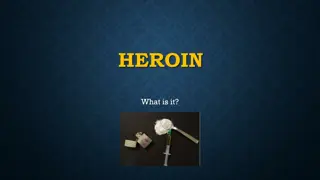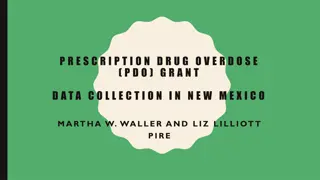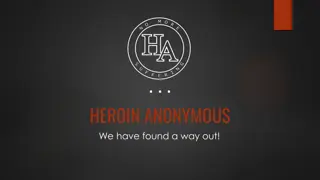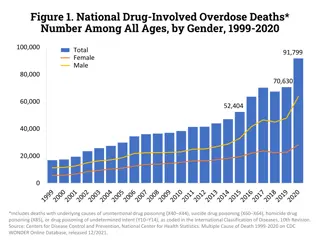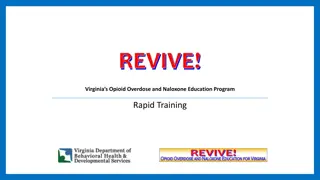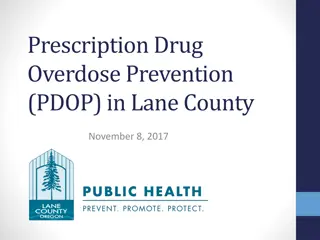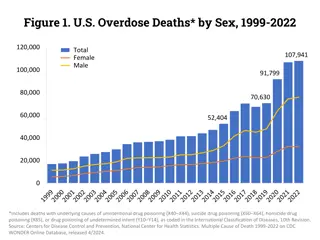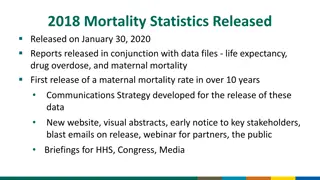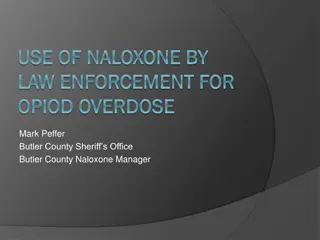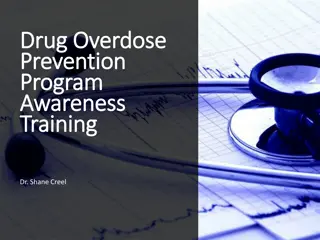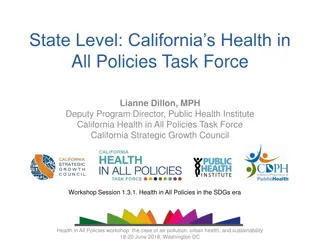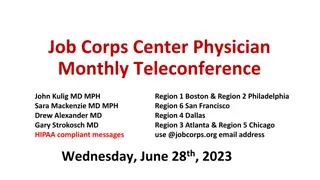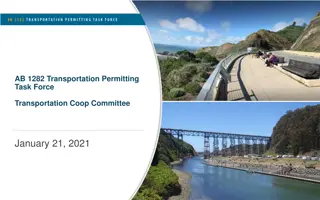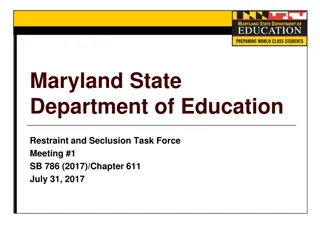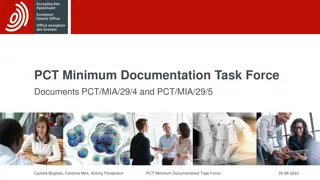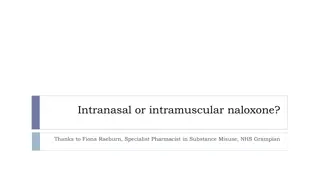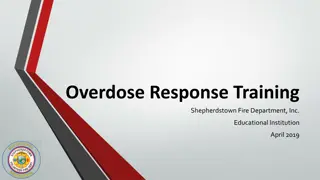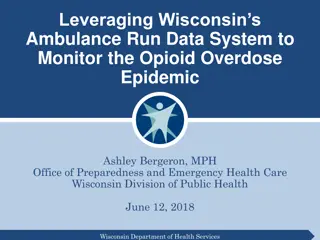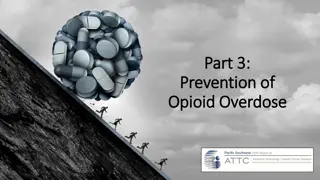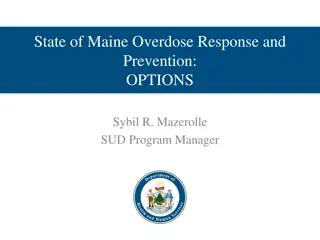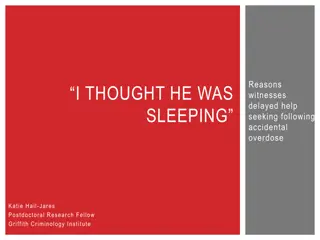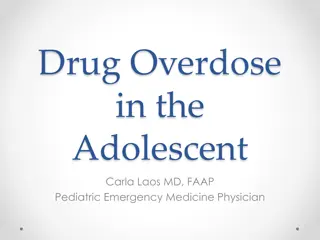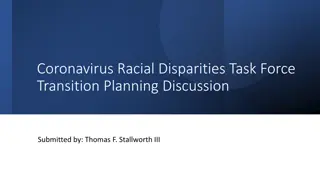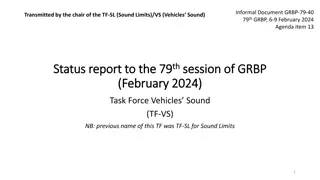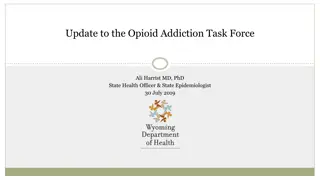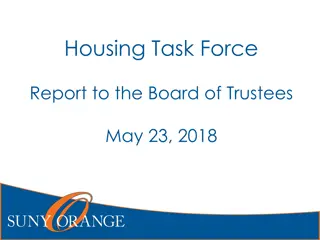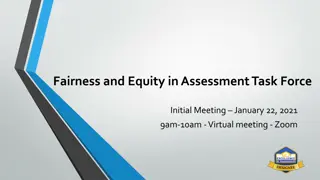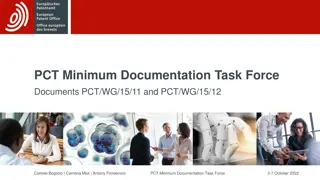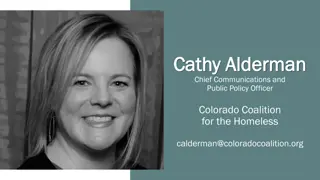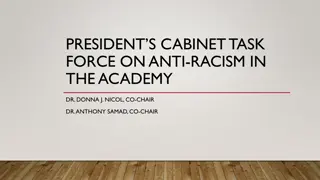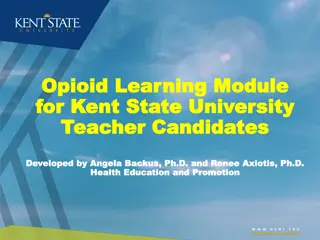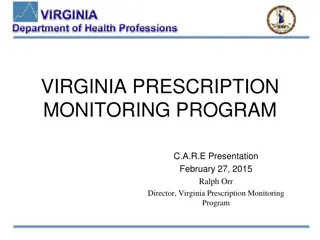Drug Task Force: Addressing Rising Heroin Overdose Cases
A collaborative Drug Task Force is working to address the increase in young adults aged 18 to 26 facing heroin overdoses, often in cardiac arrest. With a mission to promote awareness, educate, and support those struggling with addiction, the task force aims to provide cutting-edge medical care and community information. Statistics reveal the devastating impact of heroin on Long Island, emphasizing the importance of interventions like Narcan. Challenges such as stigma and trends like eyeballing alcohol highlight the need for healthcare professionals to be well-equipped in handling substance use disorders.
Download Presentation

Please find below an Image/Link to download the presentation.
The content on the website is provided AS IS for your information and personal use only. It may not be sold, licensed, or shared on other websites without obtaining consent from the author. Download presentation by click this link. If you encounter any issues during the download, it is possible that the publisher has removed the file from their server.
E N D
Presentation Transcript
GOODBYE MY SWEET, HANDSOME BOY JUDY RICHTER, LMSW
IDENTIFYING THE PROBLEM Increase in number of young adults aged 18 to 26 coming into the ER with Heroin overdose often in cardiac arrest.
THE MISSION Collaboratively the Drug Task Force promotes awareness, educates, and strives to support patients and families struggling with addiction. We accomplish this as a hospital based interdisciplinary task force by: educating caregivers; advocating for cutting edge medical care for addicted persons; and informing the community about addiction.
STASTISTICS A total of 700 people on Long Island have died from Heroin since 2014.
STATISTICS Narcan has saved over 1,000 lives in Suffolk and Nassau Counties. March 3, 2016 Gov. Cuomo announced Narcan is now available over the counter from all NY independent pharmacies. 480 CVS will be registered opiate overdose programs.
STIGMA Health care professionals are crucial in the identification and accessibility to treatment for people with substance use disorder. A large majority of health care professionals lack adequate education and training in working with patients with addiction.
STIGMA Negative attitudes of health care professionals diminish patient s feelings of empowerment and subsequent treatment.
TRENDS IN ADOLESCENT DRUG USE EYEBALLING TAMPING SYNTHETHICS k2
EYEBALLING Is the practice of pouring alcohol through the eye socket. Sweeping college campuses in UK and USA. Teenagers are doing this to avoid alcohol on their breath. Individuals doing this claim eyeballing induces feelings of drunkenness at rapid speeds.
EYEBALLING It is competitive and pain is part of the competitiveness. It can cause long term damage, burning, inflammation, scaring of the cornea, and does not show symptom's for months.
TAMPING Vodka tampon- is NOT the name of a punk rock band.
TAMPING Tampons are soaked in alcohol and are inserted into the rectum or vagina. The alcohol is absorbed through the blood stream. It s 10 to 20 times more lethal than drinking alcohol. Boys participate in tamping more than girls
SYNTHETHICS K2 is a synthetic cannabis. It is man made with mind altering chemicals that are either sprayed on dried plant material so they can be smoked or used as liquids to be vaporized and inhaled in e-cigarettes. They are particularly popular with young people.
SYNTHETICS For several years synthetic weed mixtures were easy to obtain. However, now due to their high potential for abuse and no medical benefit they are illegal to sell, buy, or possess.
SYNTHETICS K2 goes by a number of designer names such as: Spice Joker Black Mambo Krush Kronic Green Giant Wicked X Mr. Smiley Moon Rock
SYNTHETICS User s report some effects similar to marijuana : Elevated mood Altered perception Psychosis-delusional or distorted thinking Relaxation
SYNTHETICS Synthetics are often wrapped in foil packets that can be marked as home incense, or herbal smoking blends. Packaging often has claims that the contents are safe and natural. K2 cannot be detected in standard drug test.
SYNTHETICS These products are sold online and in drug paraphernalia stores, bodegas, gas stations, and convenience stores.
ADVERSE EFFECTS OF K2 Rapid heart rate Vomiting Violent behavior Suicidal thoughts High blood pressure Seizures Kidney damage
SYNTHETICS K2 is addictive and withdrawal symptoms include: Headaches Anxiety Depression Irritability
FACTS If someone is going to become addicted to drugs it will most likely happen during adolescence. If you can avoid drug use until you are 22 to 23 years old the probability that you will ever get addicted to anything is less then 1 Percent.
FACTS In 2013 more than half of kids who graduated from high school had misused prescription pills. More than half of the marijuana sold on Long Island is laced with methamphetamine which is not visible to the user.
FACTS Every drug that is used effects a chemical in the brain called dopamine. Dopamine helps regulate movement of emotional responses and it enables us not only to see rewards, but take action to move towards them.
MEDICATION ASSISTED TREATMENT Medications are a critical component of opioid addiction treatment. Medications developed to treat opioid addiction work through the same receptors as the addictive drug, but are safer and less likely to produce the harmful behaviors that characterize addiction.
MEDICATION ASSISTED TREATMENT 3 Types of Medication Assisted Treatment: 1.) AGONIST: activate opioid receptors 2.) PARTIAL AGONIST: which activate opioid receptors, but produce a demished response. 3.) ANTAGONIST: block the receptor, and interfere with the rewarding effects of opioids.
MEDICATION ASSISTED TREATMENT Physicians prescribe a particular mediation based on a patient s specific medical needs and other factors.
MEDICATION ASSISTED TREATMENT EFFECTIVE MEDICATIONS INCLUDE METHADONE A slow acting opioid agonist. Taken orally so it reaches the brain slowly, dampening the high and preventing withdrawal. Has been used since 1960 to treat heroin addiction.
MEDICATION ASSISTED TREATMENT METHADONE Only available through approved out patient treatment programs It is dispensed to patients on a daily basis.
MEDICATION ASSISTED TREATMENT BUPRENORPHINE (SUBUTEX, SUBOXONE) A partial opioid agonist. Relives drug cravings with out producing the high or dangerous side effects of other opioids. Is taken orally Physicians need to be certified to prescribe it. Effective for use starting in early withdrawal.
MEDICATION ASSISTED TREATMENT NALTREXONE ( VIVITROL) Opioid antagonist. Not addictive or sedating Does not result in physical dependence. Given as a monthly injection it eliminates need for daily dosing. Vivitrol is given after a patient has been detox from Opiates 5 to 7 days.
MEDICATION ASSISTED TREATMENT Scientific research has establish that Medication Assisted Treatment of opioid addiction increased patient s sobriety retention and decreased drug use.
Medication Assisted Treatment Research reveals new strategies for addiction medication. Improved medications: PROBUPHINE is a long acting version of Suboxone that is showing promise in clinical trails. It is an IMPLANT inserted under the skin that delivers medication for 6 months at a time
MEDICATION ASSISTED TREATMENT VACCINE RESEARCH VACCINES are being developed to help combat addictions, including heroin. A heroin vaccine currently under development is projected to corral heroin in the blood stream, prevent it from reaching the brain, and exerting it s euphoric effects.
THE LITTLEST ADDICTS Whether their mother was using illicit opioid street drugs or misusing prescription pain killers, babies born to addicted mothers all have one thing in common- THEY ARE AT RISK FOR WITHDRAWAL AFTER DELIVERY This is referred to as: NAS-Neonatal Abstinence Syndrome
NEONATAL ABSTIENCE SYNDROME Signs of NAS: Difficulty with tone and movement. Infants with these problems can have tight muscles and tremors. Problems with feeding, weight loss, failure to thrive. Difficulty with maintaining a quite alert state which is needed to interact with their caregivers.
NEONATAL ABSTIENCE SYNDROME Irritability Difficulty with touch, sound movement, or visual stimulation. Gagging, vomiting, diarrhea, fast breathing, or hiccupping 50 - 70 % of NAS babies require treatment for withdrawal.
NEONATAL ABSTIENCE SYNDROME Treatment If medication intervention is necessary, physicians typically use morphine. Methadone can also be used. Medication is gradually weaned off prior to hospital discharge.
NEONATAL ABSTIENCE SYNDROME Average newborn spends 2 to 3 days in the hospital. A baby with NAS spends an average of 16 days in the hospital. A newborn with NAS have a higher rate of being readmitted with in the first month after discharge.
NEONATAL ABSTIENCE SYNDROME Long term outcome/prognosis: Some of these infants have other difficult co-existing factors. Maternal drug use, exposure to violence, poor nutrition, or inadequate well baby care. Substance exposed children are at higher risk for medical, developmental, emotional, and behavioral concerns as they grow.
NEONATAL ABSTIENCE SYNDROME In America, a baby is born dependent on Opiates every 19 minutes. In 2013 there were more than 27,000 diagnosed cases of drug dependent newborns.
NEONATAL ABSTIENCE SYNDROME Suffolk County ranks second in NYS for addicted newborns; 171 infants were born with opioids in their system in 2014. Nassau county had 53 addicted newborns in 2014.
NEONATAL ABSTIENCE SYNDROME WHY ARE PREGNANT WOMEN NOT GETTING THE HELP THEY NEED? Living in the shadows for fear of stigma, shame, guilt. They are not being honest with their doctors Want to stop but can t They think the baby will not be effected
NEONATAL ABSTIENCE SYNDROME What is being done? Some physicians are using SBIRT (short brief intervention and referral to treatment). Women who do come forward to get treatment are put to the top of the list. TREATMENT CENTERS: Morning Star , Stony Brook University Hospital, NUMC, Zucker Hillside Hospital.
NEONATAL ABSTIENCE SYNDROME WHAT ARE OTHER STATES DOING? The Tennessee Solution: A law that will criminally prosecute a pregnant women abusing drugs. This law allows prosecutors to charge women with assault if they can prove drug use during pregnancy harmed the newborn. Safe Harbor Act grants pregnant women priority access to addiction treatment protecting the custody of the infant as long as they receive help.
NEONATAL ABSTIENCE SYNDROME The OHIO Recovery Plan. A grant that allows women to receive drug treatment and in depth counseling. MAT for Opiate addiction. Relapse prevention program after the baby is born Transportation or babysitting assistance for medical treatment appointments. Vouchers for transitional housing.
NEONATAL ABSTIENCE SYNDROME NEW YORK s Plan: Senator Schumer has asked the National Institute of Health and Federal Center for Disease Control & Prevention to research ways to help pregnant women who are addicted. Senate Majority Leader John J. Flanagan and the Joint Senate Task force on Heroin and Opiate Addiction announced that the Senate will include a total of $167 million in funding to strengthen prevention, treatment, recovery, and education as part of its 2016-17 budget proposal.
REFERRALS & BARRIERS to TREATMENT REFERRALS: Addiction Service Packet Inpatient Rehab Residential Outpatient BARRIERS Lack of bed capacity Long waiting list Unlike withdrawal from alcohol or benzodiapines, withdrawal from Heroin does not cause death and therefore patient do not meet criteria for in patient detox.


